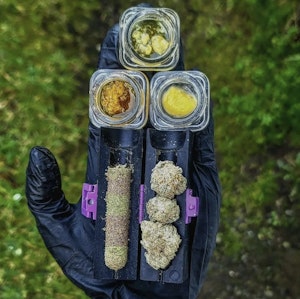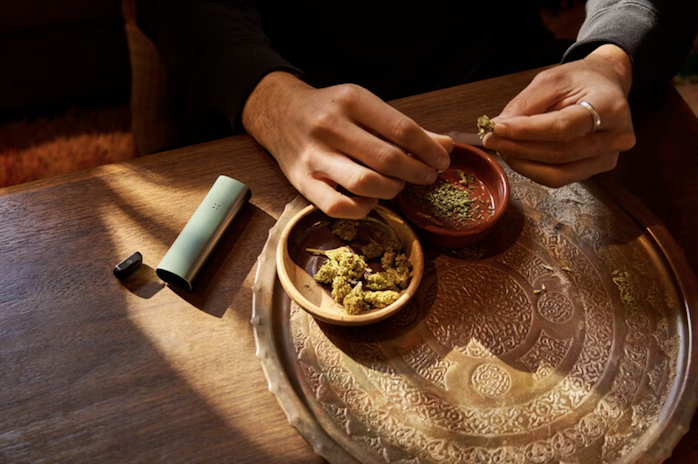
Photo Courtesy of PAX
11 Frequently Asked Dry Herb Vaping Questions Answered
Answers to the top questions about dry herb vaping.
Curious about dry herb vaping? It’s about time.
This consumption method has been around for well over a decade, and it’s arguably better than smoking for a few unique reasons. But what is dry herb vaping, and does it still feel the same as smoking weed?
We’ve compiled the top 11 questions about dry herb vaporizers to help introduce you to the elevated world of vaping flower.
What Is A Dry Herb Vape?

Photo Courtesy of PAX
A dry herb vape is a desktop vaporizer or portable vaporizer designed to heat cannabis flower. This heating process decarboxylates the flower, which is necessary to activate THC and experience its psychoactive effects.
Dry herb vapes heat ground cannabis to a precise temperature that releases THC and other active compounds as vapor without combustion. While most vape pens use oils or concentrates, dry herb vapes are specifically made for vaporizing ground plant material.
How Do Dry Herb Vapes Work?

Photo Courtesy of PAX
Dry herb vaporizers work by heating cannabis. They usually range between 350°F and 430°F and use either conduction or convection heating methods. Some hybrid vaporizers use a combination of both conduction and convection for more consistent, even heating.
Conduction vaporizers heat the herb directly on a hot surface, while convection vaporizers heat flower by circulating hot air around the herb. Once the optimal temperature is reached, the flower produces a vapor that’s inhaled through the mouthpiece.
Many devices also offer features like removable batteries, precise temperature control, and adjustable airflow, giving you more control over the experience and better flavor.
Is Dry Herb Vaping Safe?

Photo Courtesy of PAX
No method of consuming cannabis is completely risk-free. However, dry herb vaping may be a lower-risk alternative to smoking cannabis.
Since vapes heat the herb at lower temperatures, they don’t produce as many harmful byproducts as the hot smoke and combustion from smoking. That said, it’s important to do your research and choose a high-quality portable dry herb vaporizer from a reputable manufacturer to ensure safety and reliability from all angles.
Is Dry Herb Vaping Safer Than Oil Vaping?

Photo Courtesy of PAX
Yes, dry herb vaping is a bit safer than vaping oils or concentrates.
With dry herb vaporizers, you don’t get things like additives, solvents, or thinning agents that might be added to concentrates and cartridges. It’s also not associated with the acute lung injury cases linked to some oil vapes, even in regulated markets.
And then, there’s the illicit market, which introduces dangerous products with things like pesticides, heavy metals, and Vitamin E acetate. Avoid these at all costs—they can produce harmful byproducts that can be seriously damaging to your health.
Does Using A Dry Herb Vape Get You Higher?
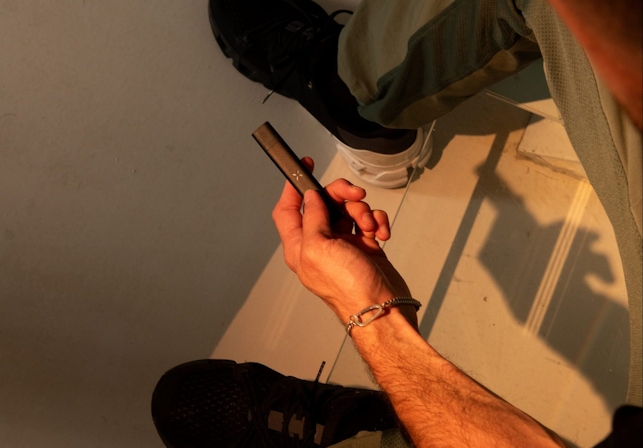
Photo Courtesy of PAX
A dry herb vape might get you higher than smoking, but won’t get you higher than dabbing or vaping concentrates. These vapes create vapor from raw cannabis to produce a full-spectrum experience at your desired temperature.
But the real bonus is that these portable devices let you extract more of the active ingredients from your herb, as the lower temperatures preserve the cannabinoids and terpenes that might get destroyed by combustion.
Still, the intensity of your high greatly depends on things like the device itself, temperature settings, desired compounds, the heating chamber, and the quality of the herb.
Does Dry Herb Vaping Smell?

Photo Courtesy of PAX
Yes, there is a faint smell. But compared to traditional methods like smoking, dry herb vaping is much better for those looking to catch a buzz discreetly.
While this also depends on the device and overall vapor quality, most vaporizers on the market generally produce a less pungent odor that dissipates more quickly than the smell of sparking up.
What's The Best Temperature For Dry Herb Vaporizers?

Photo Courtesy of PAX
This comes down to personal preference. The best temperature for dry herb vaporizers has a pretty broad range.
Lower temperatures (around 350°F-370°F) tend to produce more flavorful vapor and are better for terpene-rich strains. Higher temperatures (380°F-430°F) tend to produce more potent vapor and are better for releasing certain cannabinoids.
Most dry herb vapers find their sweet spot in the 370°F-390°F range.
Can You Put Kief In A Dry Herb Vaporizer?
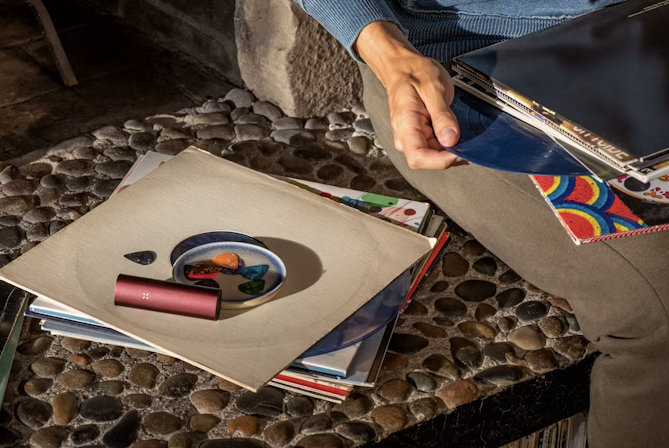
Photo Courtesy of PAX
Yes, you can put kief in most dry herb vaporizers. While it’s usually best to mix kief with flower for a more complete experience, it can most likely be used alone in the vaporizer chamber.
Avoid overloading the chamber, as kief is much more potent than regular flower. Start with a small amount and add more as you go.
How Long Does An Ounce Last When Dry Herb Vaping?
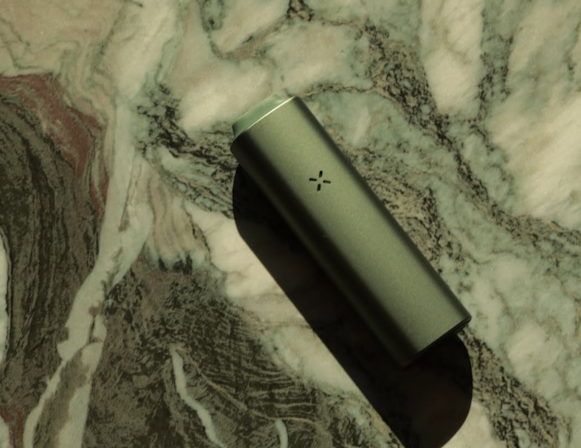
Photo Courtesy of PAX
How long an ounce lasts when dry herb vaping will vary from person to person. On average, we’d say an ounce of weed can last anywhere from two weeks to a month or more with moderate vaping habits.
The good part? Dry herb vaping is more efficient than smoking. Convection vaporizers and even conduction vaporizers heat your herbs slowly until all the THC and cannabinoids are depleted, unlike the quick ash from smoking.
What Is The Best Dry Herb Vape In 2025?
The question remains: should you go for portable or desktop vaporizers? We’d say portable. And the best dry herb vaporizer for that? Our minds went right to the PAX Plus.
This unique vaporizer not only brings out the best in your flower, but it also works with concentrates.
The Starter Kit comes with everything you need for flower sessions. But we suggest taking it up a notch with the Complete Kit, letting you save $55 with accessories for concentrates, a smaller bowl size, and maintenance essentials.
What we love most about this device is its versatility. Aside from its dual-use nature, the PAX Plus features four Experience Modes:
- Stealth for discretion
- Boost for bigger clouds
- Efficiency for battery life
- Flavor for highlighting terps
That means you can tailor your sessions from strain to strain. Plus, PAX even has a separate Water Pipe Adapter for the smoothest hits you’ll ever experience. Simply pop your PAX into the adapter with the other end in a water pipe and take a hit.
If you’re one who prioritizes efficiency, flavor, and downright enjoyable sessions, treat yourself to better vapor quality, longer battery life, and the absolute best dry herb vape on the market.
Herb Recommended Products:
READ MORE

